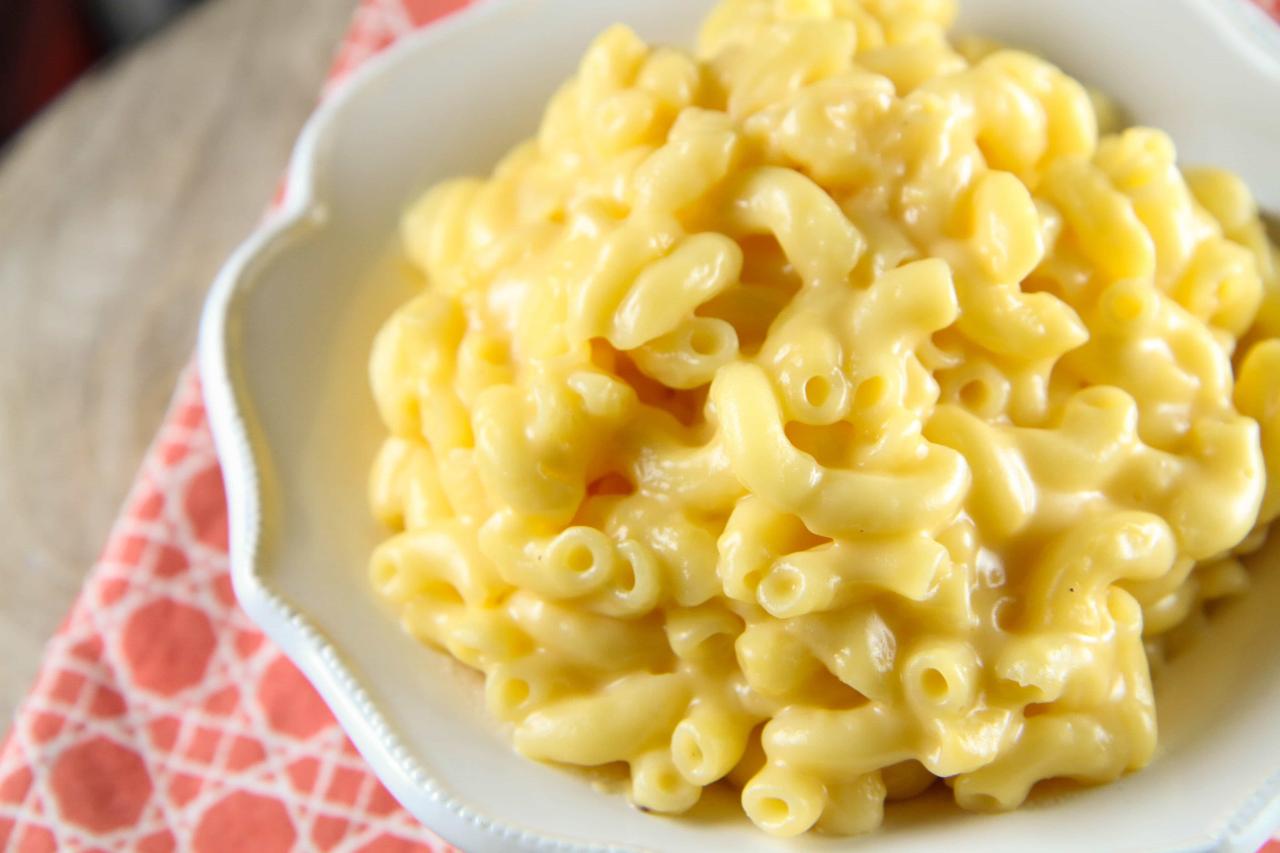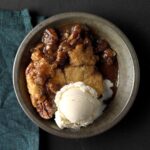Imagine creamy, dreamy mac and cheese, but without the gluten! This isn’t your grandma’s casserole; we’re diving into a world of gluten-free pasta alternatives, gourmet cheese pairings, and healthy twists that will redefine your comfort food experience. Prepare for a journey through vibrant vegetable additions, innovative techniques for achieving that perfect cheesy sauce, and visually stunning presentation ideas that will elevate your mac and cheese from weeknight staple to culinary masterpiece.
We’ll explore a range of gluten-free pasta options, each with its unique texture and cooking characteristics, and delve into the subtle yet significant differences in flavor profiles created by using various cheeses. From cheddar’s sharp bite to Gruyère’s nutty complexity, we’ll guide you through creating the perfect cheesy harmony. Beyond the cheese, we’ll showcase how incorporating vegetables not only boosts the nutritional value but also adds delightful layers of flavor and texture. Get ready to transform a classic into a healthy, delicious, and visually captivating dish.
Step-by-Step Gluten-Free Mac and Cheese Recipe

This recipe delivers a luxuriously creamy, cheesy mac and cheese experience, entirely free of gluten. We’ll focus on techniques that build a rich sauce without relying on traditional flour-based thickeners, resulting in a dish that’s both satisfying and safe for those with gluten sensitivities. The key is a careful roux made with gluten-free butter and flour alternative, along with the right cooking technique for the pasta.
Gluten-Free Mac and Cheese Preparation
This section details the step-by-step process for making a delicious gluten-free mac and cheese. Precise measurements and timing ensure optimal results.
- Cook the Pasta: Bring 6 cups of salted water to a rolling boil in a large pot. Add 1 pound of gluten-free elbow macaroni. Stir to prevent sticking. Cook according to package directions, usually 8-10 minutes, until al dente. Do not overcook. Drain the pasta immediately and rinse with cold water to stop the cooking process and prevent sticking. Set aside.
- Make the Cheese Sauce: Melt 1/2 cup of gluten-free butter in a medium saucepan over medium heat. Whisk in 1/4 cup of gluten-free all-purpose flour blend (such as Bob’s Red Mill 1-to-1 Baking Flour). Cook for 1-2 minutes, stirring constantly, until the mixture is smooth and bubbly. This creates a roux, the base of our sauce. Avoid browning the roux; a light golden color is ideal.
- Gradually Add Milk: Gradually whisk in 3 cups of whole milk (or a combination of milk and cream for extra richness), ensuring no lumps form. Continue whisking constantly until the sauce thickens slightly. This process takes about 5-7 minutes.
- Incorporate Cheese: Reduce the heat to low. Add 2 cups of shredded sharp cheddar cheese, 1 cup of shredded Gruyere cheese, and 1/2 cup of grated Parmesan cheese. Stir until the cheese is completely melted and the sauce is smooth and creamy. If the sauce is too thick, add a tablespoon of milk at a time until desired consistency is reached. If too thin, continue cooking gently for a few more minutes.
- Combine Pasta and Sauce: Add the cooked gluten-free pasta to the cheese sauce. Stir gently to coat the pasta evenly. Season with salt and freshly ground black pepper to taste.
- Bake (Optional): For a baked mac and cheese, transfer the pasta mixture to a greased 9×13 inch baking dish. Top with breadcrumbs (gluten-free, of course!) and a sprinkle of extra cheese. Bake in a preheated oven at 375°F (190°C) for 20-25 minutes, or until golden brown and bubbly.
Techniques for a Creamy, Smooth Cheese Sauce
Achieving a luxuriously creamy cheese sauce without gluten requires attention to detail. The key is a well-made roux and careful cheese incorporation. Using a combination of cheeses adds depth of flavor and texture. A low and slow approach prevents scorching and ensures a smooth, lump-free result. High-quality cheeses are essential for the best flavor.
Gluten-Free Pasta Cooking Techniques
Properly cooking gluten-free pasta is crucial to prevent it from becoming mushy or sticking together. Careful attention to cooking time and water temperature is essential. Rinsing with cold water after draining stops the cooking process and helps prevent sticking.
| Common Gluten-Free Pasta Cooking Mistakes | Solutions |
|---|---|
| Overcooking the pasta, resulting in mushy texture. | Cook the pasta according to package directions, but err on the side of slightly undercooked (“al dente”). Rinse immediately under cold water to stop the cooking process. |
| Pasta sticking together during cooking. | Use plenty of water when cooking. Stir frequently to prevent sticking. Rinse with cold water after draining. |
| Undercooked pasta, resulting in a firm, uncooked center. | Carefully follow package directions for cooking time. If unsure, test for doneness by tasting a piece of pasta. |
From perfectly cooked gluten-free pasta to a luxuriously smooth, creamy cheese sauce, mastering this recipe is a rewarding culinary adventure. We’ve explored diverse pasta options, cheese combinations, and healthy substitutions, empowering you to customize this classic dish to your preferences and dietary needs. Whether you’re aiming for a casual weeknight meal or a sophisticated dinner party presentation, the possibilities are endless. So, gather your ingredients, embrace the creative process, and prepare to savor the ultimate gluten-free mac and cheese experience—a testament to the fact that healthy and delicious can, and should, coexist.
Essential FAQs
Can I use pre-shredded cheese?
While convenient, pre-shredded cheese often contains cellulose which can prevent the sauce from becoming as smooth. Freshly grated cheese is recommended for best results.
How long can I store leftover mac and cheese?
Store leftovers in an airtight container in the refrigerator for up to 3 days. Reheat gently on the stovetop or in the microwave.
Can I freeze gluten-free mac and cheese?
Yes, you can freeze gluten-free mac and cheese. Allow it to cool completely before freezing in an airtight container for up to 2 months. Thaw overnight in the refrigerator before reheating.
What if my cheese sauce is too thick?
Add a tablespoon or two of milk or broth to thin the sauce to your desired consistency.
What if my cheese sauce is too thin?
Simmer the sauce for a few more minutes to allow it to thicken. You can also whisk in a cornstarch slurry (1 tsp cornstarch mixed with 1 tbsp cold water) for a thicker consistency.


